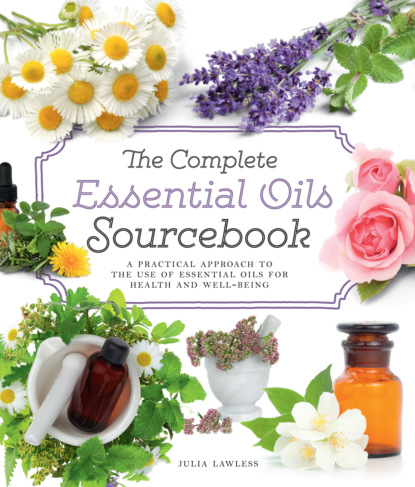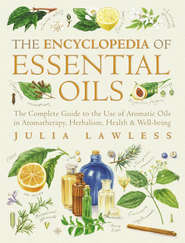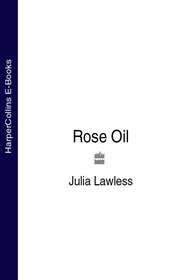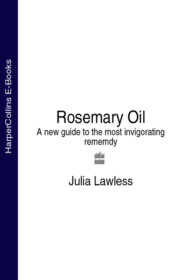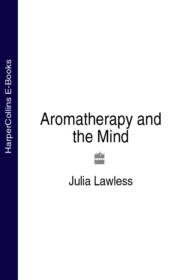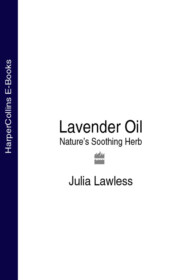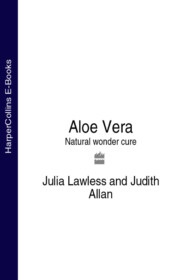По всем вопросам обращайтесь на: info@litportal.ru
(©) 2003-2024.
✖
The Complete Essential Oils Sourcebook: A Practical Approach to the Use of Essential Oils for Health and Well-Being
Настройки чтения
Размер шрифта
Высота строк
Поля
ANISEED
Aromatic bathing (#ulink_92c6259c-e7b4-58bd-84e8-97590ff1e610)
ONE OF THE SIMPLEST and most pleasant ways to use essential oils is in the bathtub, where the oils enhance the relaxing effect of a warm slow bath, or the stimulating effect of a brisk hot bath or cold dip. The therapeutic effects of bathing have been recognized for centuries. The sophistication of many of the Ancient Roman spa bath houses can still be seen, with their hot and cold compartments, steam rooms, and aromatic massage quarters. Very hot baths stimulate perspiration, which is valuable in cases of infectious illness and for encouraging elimination of wastes and detoxification. However, they can also be draining and, in the long run, can cause the skin to lose its elasticity. A medium-hot or warm bath has a soothing and relaxing effect on both the mind and body, while cool or cold water has a more invigorating and stimulating effect. Lukewarm baths are good for lowering the temperature in cases of fever.
Pure essences
This is the easiest and most popular way of using essential oils for bathing. Simply add from 5 to 10 drops of your chosen essential oil (or a blend of oils) to the bathtub when it is full, and relax in the aromatic vapors. Use lavender oil for promoting relaxation, rosemary as an invigorating tonic, or marjoram for soothing tired muscles.
Bath bags
Gather a selection of fresh herbs or aromatic flowers together, such as lavender sprigs, rose petals, lemon balm leaves, and chamomile flowers, and tie them loosely in a muslin bag with a piece of string or ribbon. Choose specific herbs both for their therapeutic properties and for their scent. If you wish, add a few drops of a chosen essential oil to the bundle to enhance the fragrance. Then tie the bag to the faucets and let it hang in the stream of hot water while the bathtub is filling.
Marjoram relieves aching muscles.
WARNING
Always check with specific safety data before using a new oil in the bathtub, to avoid possible irritation. Details are given for each oil in the information here (#litres_trial_promo). Increase the dilution during pregnancy and for babies or infants to at least half the recommended amount. For babies, avoid the possibly toxic or irritant oils altogether.
Rosemary invigorates.
Bath salts
Epsom salt (magnesium sulphate) or Dead Sea salts are healing substances in themselves, and make an excellent medium for combining with essential oils. Salt contains precious minerals, has an alkalizing effect on the body, promotes the elimination of acidic wastes from the muscles and joints, and induces copious perspiration—good for infectious illness, rheumatism, arthritis, and for promoting relaxation. Dissolve one or two handfuls of Epsom salt in boiling water, add a few drops of essential oil, and pour into the bathtub. Alternatively, simply add 5 drops of essential oil to every handful of Epsom salt or Dead Sea salts, pour directly into the bathtub and agitate the water before getting in.
Moisturizing bath oils
A few drops of an essential oil can also be mixed in a teaspoonful of vegetable oil, such as sweet almond oil, before being added to the bathtub. This helps to moisturize the skin and ensures an even distribution of the essential oil, which is especially important in the case of babies and young children.
To make a larger quantity, mix 200 drops of an essential oil (or blend) with 3½fl oz/100ml jojoba oil or another base or carrier oil (see here (#litres_trial_promo)) containing five percent wheat germ oil and store in a tinted glass bottle. Add a teaspoonful of this mixture to the bath water when required.
Foot and hand baths
Valuable for warding off chills, for easing arthritic or rheumatic pain, and for the treatment of specific foot complaints, a hot aromatic foot bath can also be very effective for relieving stress and over-exhaustion (use lavender and sweet marjoram) and is a quick aid to combating excessive perspiration (use tea tree and rosemary). Simply sprinkle 5 or 6 drops of essential oil into a bowl or basin of warm or hot water and soak feet or hands for about ten minutes. Alternatively, dilute the essential oils in a teaspoonful of cider vinegar, honey, or a moisturizing vegetable oil beforehand.
Two or three drops of soothing oil can be used in a baby’s bedtime bath and this may lead to a more restful night for everyone.
Valerian produces an oil used to relieve nervous tension and insomnia.
Therapeutic hip bath or douche
This method can be helpful in the treatment of urinary or genital conditions, such as pruritus (itching), thrush, or cystitis. The area can be bathed in a hip or sitz bath or a bowl of warm water to which 3 to 5 drops of a suitable essential oil have been added—a mixture of cypress and lavender, for example, can help to heal the perineum after childbirth. Alternatively, an enema pot or plastic douche can be bought from some pharmacies. Mix 3 to 5 drops of a suitable essential oil with warm water before inserting—bergamot and tea tree mixture is effective for the treatment of thrush.
The sauna
In Scandinavia, the sauna is the traditional method of cleansing and toning the whole system. Dry heat and steam are used to open the pores and promote the elimination of waste products. This is followed by a plunge into very cold water that closes the pores, and tones and refreshes the skin. In Finland, where the tradition of the sauna originates, bundles of fresh birch twigs are slapped on the skin, stimulating the circulation and imparting a delicious fragrance. Essential oils that are most suitable for use in the traditional sauna include fresh-scented oils such as pine, juniper, myrtle, eucalyptus, and cedarwood. (Very rich or floral oils such as lavender, ylang ylang, or patchouli are too heady and should not be used.) Add 2 or 3 drops to 17fl oz/500ml of warm water and throw on the heat source for an aromatic and refreshing steam bath.
Therapeutic massage and body oils (#ulink_ad573a1e-9ab4-52f5-8daa-5f0dedb9af11)
THERAPEUTIC AROMATIC MASSAGE is the main method used by professional aromatherapists, but it can also be practiced at home—either on oneself, or on a friend or partner. Body oils are best applied after a warm bath, when the pores of the skin are still open, to encourage rapid absorption.
For the purpose of massage or general application to the skin, a few drops of essential oil are always mixed with a larger measure of base or carrier oil, usually a light vegetable oil such as sweet almond oil or grapeseed oil. When preparing a body oil or massage oil, the dilution should be in the region of 5 to 30 drops of essential oil in a bottle of 2fl oz/50ml of base oil, depending upon the type of essential oil used and its specific purpose. For general massage purposes, a dilution of 2.5 percent (see here (#ulink_d695dbaf-5796-51e6-b246-86cf637326eb)) is suitable for adult use. To calculate how much essential oil to add to a base oil, assess the amount of base oil in fluid ounces/millilitres and add half the number of drops of essential oil.
Standard dilution (2.5%)
Special dilutions
For 2fl oz/50ml of base oil:
Vaporized oils and steam inhalation (#ulink_2c9ed3ca-e3d1-5f68-a49c-1dc26478ba1f)
ALL ESSENTIAL OILS are highly volatile, and evaporate or vaporize on exposure to air, giving off their aroma. In inhaling these aromas we absorb the essence in two ways: while the scent itself directly affects receptors in the brain, molecules of substances from the oils are absorbed into the bloodstream and circulated around the body. Many oils have a medicinal effect in the air itself as well as on the person breathing them, as they are powerful antiseptics that can kill airborne bacteria. Heating the oils speeds up their evaporation rate.
Vaporizer
Purpose-made ceramic or metal vaporizers are now readily available in specialty shops and some health stores. A few drops of essential oil are put in the bowl of the burner and a night-light is then placed underneath, causing the oil to heat up and evaporate. A little water can be mixed with the oil in the bowl to slow down the evaporation rate if required. Because they have a naked flame, vaporizers of this type should be kept well out of reach of children or pets.
Useful oils for vaporizers
To disinfect a sickroom: Eucalyptus, Myrrh, Thyme, Pine, Tea tree. To freshen the air and cheer the spirits: Basil, Bergamot, Lavender. To keep insects at bay: Citronella, Geranium. For sensual perfume: Black pepper, Clary sage. To clear the head and mind: Hyssop, Marjoram, Peppermint
This traditional vaporizer uses a night light.
CITRONELLA
Electric diffuser
An electric diffuser is more expensive to buy than a ceramic or metal vaporizer, but has the advantage of not needing a naked flame to generate the heat. This makes it more suitable for night use, especially in children’s bedrooms. In addition, many electric diffusers have a variety of settings to adjust the rate of evaporation. Such diffusers are readily available through specialist aromatherapy suppliers.
Vaporized essential oils can be used for various purposes: a penetrating oil such as sweet basil to scent a room and dispel unwanted odors; an antiseptic oil such as eucalyptus to rid a room of germs in cases of infectious illness; insecticides such as citronella to repel mosquitoes and other insects; steam inhalation, using an oil such as rosemary, for respiratory disorders. The five main methods of assisting the vaporization of essential oils are described in detail below.
Light bulb ring
A very easy and cheap way of vaporizing essential oils is to use a ceramic or metal light bulb ring. Simply put a few drops of essential oil into the ring, place on top of a light bulb, then switch the light on. Please see the warning below for safety.
BASIL
WARNING
Do not apply essential oils directly to a light bulb, as this can cause the bulb to explode.
Inhaling vaporized essential oils, such as peppermint, from a bowl of steaming-hot water is a simple way to treat respiratory infections.
Steam inhalation
Vaporizing an essential oil using hot water as a medium is especially valuable for respiratory conditions, such as whooping cough. It can also be used to help to keep up the humidity levels in centrally heated rooms. For environmental purposes, simply add a few drops of essential oil to a bowl of hot water placed on a radiator or any other source of heat.
Direct steam inhalation is especially suited to congested sinus, throat, and chest infections. Soaking in a steaming hot bath to which have been added 5 or 6 drops of expectorant oils such as myrtle or rosemary, which are both nonirritating to the skin, helps to clear congestion. This method also acts as a kind of facial steam or sauna: the use of cleansing, antiseptic oils such as tea tree can help unblock the pores and clear the complexion of minor blemishes.
Другие электронные книги автора Julia Lawless
Rose Oil




 0
0





